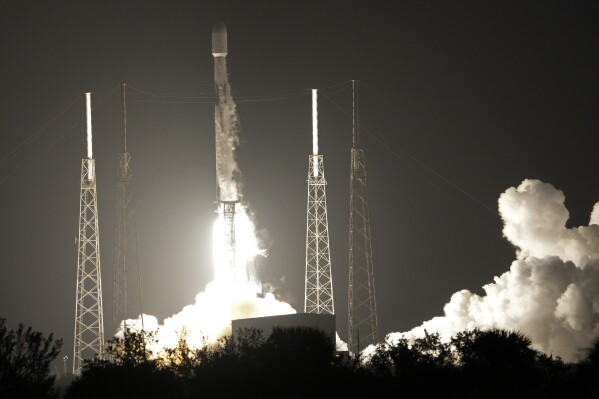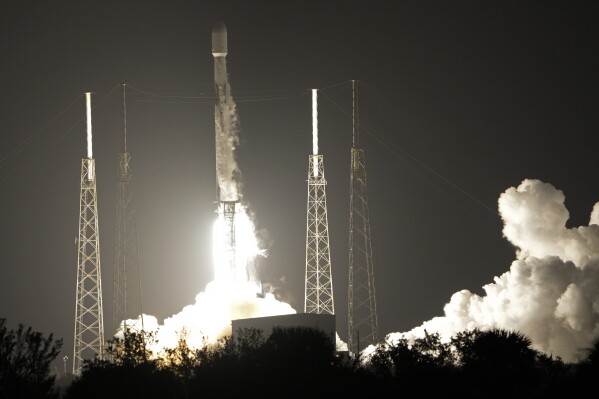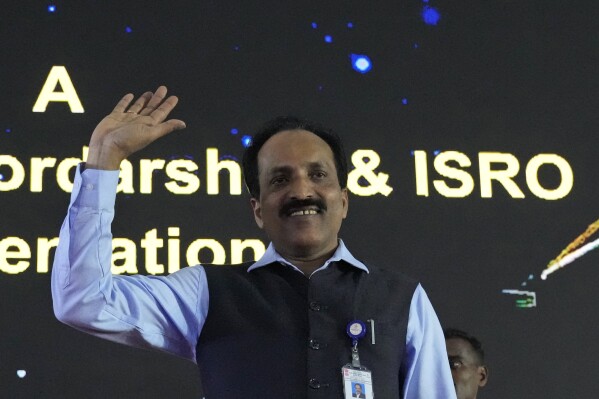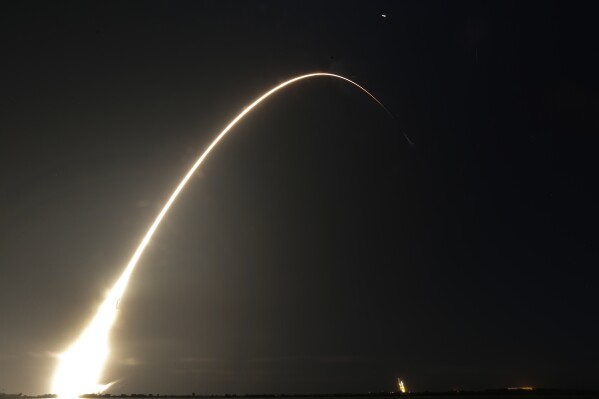Japan becomes the fifth country to land a spacecraft on the moon
TOKYO (AP) — Japan became the fifth country in history to reach the moon when one of its spacecrafts without astronauts successfully made a soft landing on the lunar surface early Saturday.
However, space officials said they needed more time to analyze whether the Smart Lander for Investigating Moon, or SLIM, achieved its mission priority of making a pinpoint landing. They also said the craft’s solar panel had failed to generate power, which could shorten its activity on the moon.
Space officials believe that the SLIM’s small rovers were launched as planned and that data was being transmitted back to Earth, said Hitoshi Kuninaka, head of the Institute of Space and Astronautical Science, a unit of Japan’s space agency.
But he said that SLIM’s solar battery wasn’t generating power and that it had only a few more hours of battery life. He said the priority was for the craft to gather as much data about its landing and the moon as possible on the remaining battery.
Japan follows the United States, the Soviet Union, China and India in reaching the moon.
Kuninaka said he believes that Japan’s space program at least achieved “minimum” success.
SLIM landed on the moon at about 12:20 a.m. Tokyo time Saturday (1520 GMT Friday).
There was a tense wait for news after the Japan Aerospace Exploration Agency’s mission control initially said that SLIM was on the lunar surface, but that it was still “checking its status.” No further details were given until a news conference nearly two hours later.
For the mission to be considered fully successful, space officials needed to confirm whether SLIM made a pinpoint landing. Kuninaka said that while more time was needed, he personally thought it was most likely achieved, based on his observation of data showing the spacecraft’s movement until the landing and its ability to transmit signals after landing. He said the solar panel is possibly not in the planned angle, but there is still hope.
Despite the solar panel issue, “it’s delightful news,” Prime Minister Fumio Kishida said in a message posted on X, formerly known as Twitter, pledging the government’s continuing backing for the endeavors toward new challenges.
NASA Administrator Bill Nelson also lauded SLIM’s landing with an X message, congratulating Japan “on being the historic 5th country to land successfully on the Moon! We value our partnership in the cosmos and continued collaboration” in the U.S.-led multinational Artemis Moon exploration.
SLIM, which was aiming to hit a very small target, is a lightweight spacecraft about the size of a passenger vehicle. It was using “pinpoint landing” technology that promises far greater control than any previous moon landing.
While most previous probes have used landing zones about 10 kilometers (six miles) wide, SLIM was aiming at a target of just 100 meters (330 feet).

FILE - A SpaceX Falcon 9 rocket, with a payload including two lunar rovers from Japan and the United Arab Emirates, lifts off from Launch Complex 40 at the Cape Canaveral Space Force Station in Cape Canaveral, Fla., on Dec. 11, 2022. But later in April 2023, the spacecraft from a Japanese company apparently crashed while attempting to land on the moon. Japan now hopes to make the world’s first “pinpoint landing” on the moon early Saturday, Jan. 20, 2024, joining a modern push for lunar contact with roots in the Cold War-era space race between the United States and the Soviet Union. (AP Photo/John Raoux, File)



A landing of such precision would be a world’s first, and would be crucial technology for a sustainable, long-term and accurate space probe system, said Hiroshi Yamakawa, president of Japan Aerospace Exploration Agency, or JAXA.
Japan needs the technology to secure its place and contribute in international space projects, Yamakawa said.
The project was the fruit of two decades of work on precision technology by JAXA.
SLIM, nicknamed “the Moon Sniper,” started its descent at midnight Saturday, and within 15 minutes it was down to about 10 kilometers (six miles) above the lunar surface, according to the space agency, which is known as JAXA.
At an altitude of five kilometers (three miles), the lander was in a vertical descent mode, then at 50 meters (165 feet) above the surface, SLIM was supposed to make a parallel movement to find a safe landing spot, JAXA said.
The spacecraft was testing technology to allow moon missions to land “where we want to, rather than where it is easy to land,” JAXA has said. The spacecraft also was supposed to seek clues about the origin of the moon, including analyzing minerals with a special camera.
The SLIM, equipped with a pad each on its five legs to cushion impact, was aiming to land near the Shioli crater, near a region covered in volcanic rock.
The closely watched mission came only 10 days after a moon mission by a U.S. private company failed when the spacecraft developed a fuel leak hours after the launch.
SLIM was launched on a Mitsubishi Heavy H2A rocket in September. It initially orbited Earth and entered lunar orbit on Dec. 25.
Japan hopes to regain confidence for its space technology after a number of failures. A spacecraft designed by a Japanese company crashed during a lunar landing attempt in April, and a new flagship rocket failed its debut launch in March.
JAXA has a track record with difficult landings. Its Hayabusa2 spacecraft, launched in 2014, touched down twice on the 900-meter-long (3,000-foot-long) asteroid Ryugu, collecting samples that were returned to Earth.

FILE - This time exposure photo shows a SpaceX Falcon 9 rocket, with a payload including two lunar rovers from Japan and the United Arab Emirates, launching from Launch Complex 40 at the Cape Canaveral Space Force Station in Cape Canaveral, Fla., on Dec. 11, 2022. But later in April 2023, the spacecraft from a Japanese company apparently crashed while attempting to land on the moon. Japan now hopes to make the world’s first “pinpoint landing” on the moon early Saturday, Jan. 20, 2024, joining a modern push for lunar contact with roots in the Cold War-era space race between the United States and the Soviet Union. (AP Photo/John Raoux, File)
A successful pinpoint landing by SLIM, especially on the moon, would raise Japan’s profile in the global space technology race.
Takeshi Tsuchiya, aeronautics professor at the Graduate School of Engineering at the University of Tokyo, said it was important to confirm the accuracy of landing on a targeted area.
“It is necessary to show the world that Japan has the appropriate technology in order to be able to properly assert Japan’s position in lunar development,” he said. The moon is important from the perspective of explorations of resources, and it can also be used as a base to go to other planets, like Mars, he said.
Experts say Japan needs to demonstrate its consistency in the precision landing technology to be competitive.
SLIM was carrying two small autonomous probes — lunar excursion vehicles LEV-1 and LEV-2, which officials say were believed to have been released just before landing.
LEV-1, equipped with an antenna and a camera, is tasked with recording SLIM’s landing. LEV-2, is a ball-shaped rover equipped with two cameras, developed by JAXA together with Sony, toymaker Tomy and Doshisha University.
___
Ayaka McGill contributed to this report.
Disclaimer: The copyright of this article belongs to the original author. Reposting this article is solely for the purpose of information dissemination and does not constitute any investment advice. If there is any infringement, please contact us immediately. We will make corrections or deletions as necessary. Thank you.